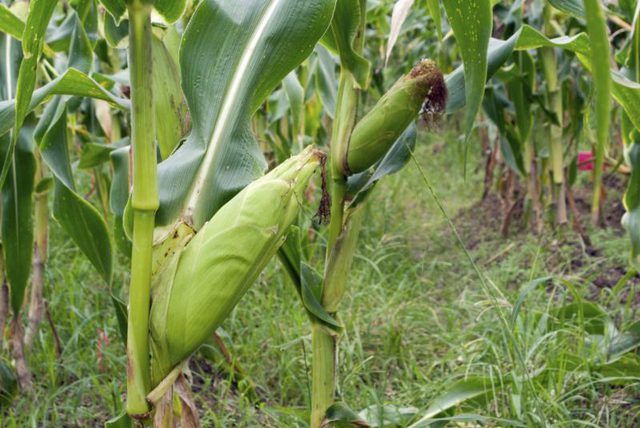Bulbs
Flower Basics
Flower Beds & Specialty Gardens
Flower Garden
Garden Furniture
Garden Gnomes
Garden Seeds
Garden Sheds
Garden Statues
Garden Tools & Supplies
Gardening Basics
Green & Organic
Groundcovers & Vines
Growing Annuals
Growing Basil
Growing Beans
Growing Berries
Growing Blueberries
Growing Cactus
Growing Corn
Growing Cotton
Growing Edibles
Growing Flowers
Growing Garlic
Growing Grapes
Growing Grass
Growing Herbs
Growing Jasmine
Growing Mint
Growing Mushrooms
Orchids
Growing Peanuts
Growing Perennials
Growing Plants
Growing Rosemary
Growing Roses
Growing Strawberries
Growing Sunflowers
Growing Thyme
Growing Tomatoes
Growing Tulips
Growing Vegetables
Herb Basics
Herb Garden
Indoor Growing
Landscaping Basics
Landscaping Patios
Landscaping Plants
Landscaping Shrubs
Landscaping Trees
Landscaping Walks & Pathways
Lawn Basics
Lawn Maintenance
Lawn Mowers
Lawn Ornaments
Lawn Planting
Lawn Tools
Outdoor Growing
Overall Landscape Planning
Pests, Weeds & Problems
Plant Basics
Rock Garden
Rose Garden
Shrubs
Soil
Specialty Gardens
Trees
Vegetable Garden
Yard Maintenance
How to Grow Corn
How to Grow Corn. Few vegetables epitomize a summer [vegetable garden](http://www.ehow.com/how_12341080_popular-vegetables-garden.html) like sweet corn (Zea mays). Its rustling stalks shoot up as the weather warms, each producing an average of one to two golden, sugar-sweet ears by late summer. Corn is somewhat fussy about its growing conditions...

Few vegetables epitomize a summer vegetable garden like sweet corn (Zea mays). Its rustling stalks shoot up as the weather warms, each producing an average of one to two golden, sugar-sweet ears by late summer. Corn is somewhat fussy about its growing conditions and care, but the taste of a homegrown ear fresh from the husk makes it well worth the effort.
Corn Varieties
Corn cultivars are classified by their color, sweetness level and days to maturity. Generally, sweeter corn varieties are less stress-resistant than standard corn, so gardeners in less moderate climates should choose standard varieties such as Seneca (Zea mays "Seneca") or Golden Cross Bantam (Zea mays "Golden Cross Bantam"). Early corn varieties such as Seneca and Silver Sensation (Zea mays "Silver Sensation") are ready for harvest in 70 to 74 days, while midseason and late cultivars such as Silver King (Zea mays "Silver King") and Silver Queen (Zea mays "Silver Queen") can take 80 to more than 90 days to reach maturity. Because corn is a warm-season crop with a long growing period, gardeners in cooler climates with a shorter growing season should choose early varieties to ensure a good yield.
Growing Conditions
Corn needs full sun, fertile soil and good drainage to perform well. Choose a site at the north side of the garden with eight to 10 hours of direct sun each day. Avoid clay or sandy soil because both present challenges for corn. Prepare the site by amending the top 12 to 15 inches of soil with a 2- to 4-inch layer of rotted steer manure or compost, preferably in the autumn before planting so it has time to mellow. Till the soil well, removing any sticks, rocks or other large pieces of debris that might interfere with the corn's roots. Also, weed the site thoroughly a day or two before sowing to eliminate any competitive plant growth. Space corn 4 to 6 inches apart at planting, then thin the plants to 8 to 12 inches once they reach 3 to 4 inches high.
Water Requirements
Soil moisture plays a key role in growing corn, especially during pollination and when kernels are forming. Insufficient water causes misshapen or missing kernels and small or undeveloped ears. At least 1 inch of water every five to seven days is required, with additional water needed during especially hot, dry or windy weather. Water in the morning so stalks have time to dry before nightfall, and water at the base of the stalks to minimize splashing onto the leaves. Run water until the soil is very moist in the top 6 to 12 inches, the equivalent of 1 inch of water, and let the surface dry out before watering again. To help conserve soil moisture, spread a 3- to 5-inch layer of mulch between the plants.
Fertilizer Needs
Corn needs ample nutrients during the growing season. Side-dress corn plants with 10-10-10 analysis fertilizer once they reach 12 to 18 inches high. Make a 3-inch-deep furrow in the soil parallel to the corn row and roughly 3 inches from the base of the stalks. Sprinkle fertilizer into the furrow at a rate of 3 tablespoons per 10-foot row. Cover the fertilizer with soil and water deeply, wetting the soil to a 12-inch depth. Side-dress again once or twice more during the growing season, especially if the corn shows signs of phosphorus or nitrogen deficiency, such as purple-tinted or pale foliage.